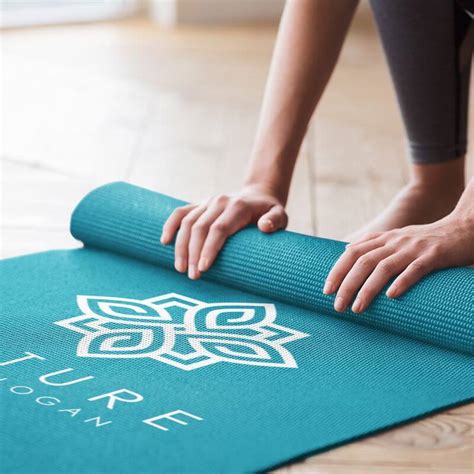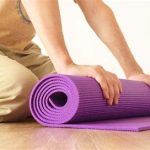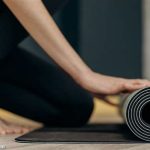How to Know When It’s Time to Buy Your Own Yoga Mat
Whether you’re new to yoga or a seasoned practitioner, you’ve likely pondered the idea of buying your own yoga mat. With so many factors to consider—hygiene, comfort, performance, and cost—deciding when to purchase a personal mat can feel like a balancing act. In this guide, we’ll walk you through the key considerations, backed by expert advice, research, and real-world experiences. Ultimately, this guide will help you make an informed decision about when, and why, to invest in your own yoga mat.
Key Concepts to Consider Before Purchasing a Yoga Mat
There are a few fundamental questions that every yoga practitioner should address before buying a mat:
- Frequency of Practice: Do you practice yoga daily or only a few times per month? Your mat’s durability and comfort will need to match your level of practice.
- Material and Sustainability: The choice of mat material influences both performance and environmental impact. Mats made from PVC are durable but less eco-friendly, while mats from natural rubber or TPE offer sustainability at varying levels of comfort and grip.
- Budget: Yoga mats range in price from budget-friendly to luxury. What are you willing to invest?
- Hygiene: How often do you use shared mats at the gym or studio? Hygiene is a significant concern for many practitioners.
- Comfort & Performance: Different mats offer varying levels of thickness, cushioning, and grip, which can drastically affect your practice.
Defining What You Need in a Yoga Mat
Before making the decision to purchase your own yoga mat, it’s essential to clarify your specific needs. Depending on your practice style—whether it’s restorative yoga or an intense vinyasa flow—the thickness and material of the mat can either enhance or hinder your experience. Additionally, for practitioners who travel frequently, portability may become a top priority.
The Historical Context of Yoga Mats: Why It’s Relevant Today
Yoga originated thousands of years ago in ancient India, and for centuries, practitioners used natural materials like grass, animal skins, and woven cloths to support their practice. The modern yoga mat, as we know it today, emerged in the late 20th century. The introduction of PVC mats in the 1970s revolutionized the practice, offering a more comfortable, cushioned surface with better grip.
However, today’s yoga practitioners are more environmentally conscious, leading to a renewed interest in mats made from sustainable materials such as cork, natural rubber, and cotton. This history plays a vital role in today’s market, where practitioners must balance the ancient tradition of simplicity with modern performance requirements.
Current State Analysis: The Yoga Mat Market in 2024
In 2024, the yoga mat industry is more diverse and competitive than ever. There are numerous options that cater to different needs, from budget to luxury, and eco-friendly to high-tech. With brands innovating in areas like antimicrobial coatings, extra-grip surfaces, and even mats with alignment guides, yoga mats have become more personalized than ever before.
Let’s break down the key elements of the current yoga mat market:
| Type of Mat | Material | Average Price | Pros | Cons |
|---|---|---|---|---|
| Basic PVC Mat | PVC | $20-$40 | Durable, Affordable | Not Eco-Friendly |
| Natural Rubber Mat | Natural Rubber | $50-$120 | Great Grip, Eco-Friendly | Heavy, Expensive |
| Cork Mat | Cork & Rubber | $60-$140 | Anti-Microbial, Sustainable | May wear down quickly |
| Travel Mat | TPE or Rubber | $40-$100 | Lightweight, Portable | Less Cushioning |
| Luxury Mat | Specialty Blends | $120+ | Superior Grip, Extra Comfort | Expensive |
Practical Applications: Choosing the Right Mat for Your Practice
The yoga mat you choose will depend heavily on your practice style, environment, and personal preferences. Let’s explore the key factors to consider for various scenarios:
- Beginners: If you’re new to yoga, a basic, affordable mat will suffice while you build your practice. Opt for a mat with moderate cushioning (about 4-6mm thick).
- Frequent Practitioners: For daily yogis, a durable mat like a natural rubber one will last longer and provide extra grip and comfort.
- Travelers: If you’re constantly on the go, consider a lightweight, foldable travel mat. However, you’ll sacrifice some cushioning.
- Hot Yoga Enthusiasts: If you practice in a heated environment, opt for mats designed with extra grip, such as those made from cork or rubber.
- Eco-conscious Yogis: Look for mats made from sustainable materials like cork, natural rubber, or jute.
Case Studies: Real-Life Experiences with Different Mats
Let’s dive into three real-world scenarios where practitioners invested in their own yoga mats:
Case Study 1: Daily Practitioner Finds Durability
Problem: Sarah practices yoga every day, but after only a few months, her inexpensive PVC mat began to wear out and lose its grip.
Solution: Sarah invested in a higher-end natural rubber mat. While the upfront cost was significantly higher, the mat has lasted over two years with minimal signs of wear and continues to provide excellent grip.
Case Study 2: Traveler Prioritizes Portability
Problem: John frequently travels for work and was frustrated with the weight of his rubber mat. It was cumbersome and difficult to carry through airports.
Solution: John switched to a lightweight travel mat made from TPE. Although it lacks the cushioning of a standard mat, the portability and ease of use have been worth the trade-off.
Case Study 3: Hot Yoga Enthusiast Seeks Extra Grip
Problem: Emily practices hot yoga and found her PVC mat became too slippery during sessions.
Solution: Emily purchased a cork yoga mat, known for its superior grip in sweaty conditions. The anti-microbial properties of cork also helped her avoid unpleasant odors after class.
Stakeholder Analysis: Who Benefits from Owning a Yoga Mat?
Purchasing a yoga mat benefits different stakeholders in the yoga community, including:
- Individual Practitioners: Greater comfort, hygiene, and personalization in their practice.
- Studios & Gyms: Encouraging students to bring their own mats reduces cleaning and replacement costs for communal mats.
- Environmental Advocates: Promoting the use of eco-friendly mats helps reduce plastic waste in the yoga industry.
Implementation Guidelines for Buying the Right Mat
If you’ve decided to purchase your own yoga mat, follow these steps:
- Assess Your Needs: Consider the frequency of your practice, the environment in which you practice, and your budget.
- Research Materials: Evaluate different materials—PVC, natural rubber, cork, etc.—and weigh their pros and cons.
- Test for Comfort: Visit a store or borrow mats from friends to test different levels of cushioning and grip.
- Read Reviews: Before making a purchase, consult online reviews to understand long-term durability and performance.
- Invest Wisely: While it may be tempting to go for the cheapest option, a higher-end mat may save you money in the long run through durability.
Ethical Considerations: Sustainability and Fair Labor Practices
As the yoga industry grows, so does the demand for eco-friendly products. Ethical considerations include:








